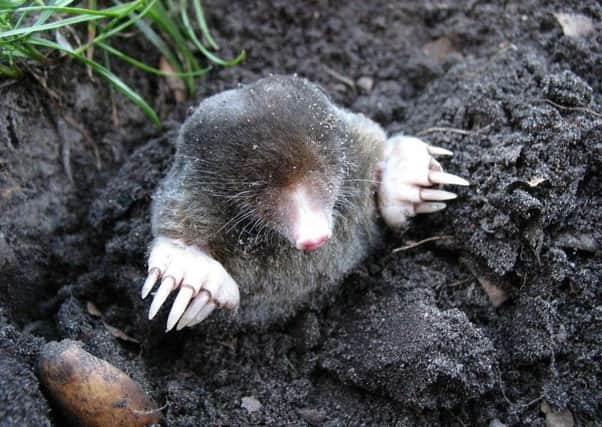Rain brings relief for Sussex's moles after heatwave


Charlotte Owen, WildCall Officer at the conservation charity, said she had seen more moles than ever before this summer – but sadly, all of them were dead.
She blamed the heatwave which has seen the ground ‘baked solide and becoming impenetrable’ over the last few weeks, forcing moles to dig ever-deeper tunnels to catch their prey.
Advertisement
Hide AdAdvertisement
Hide AdBut without a ready supply of food, the moles are sadly vulnerable to dehydration and starvation, she said.
During hot weather, she said moles would be grateful for ‘a shallow dish of water and some extra food’.
She said: “Moles spend almost their entire lives underground, leaving tell-tale mounds of soil to mark their passage but otherwise remaining elusive.
“Sightings are understandably rare but in the last few weeks I’ve seen more moles than ever before – sadly, all of them dead.
Advertisement
Hide AdAdvertisement
Hide Ad“The most likely culprit is the weather, and the heat wave seems to have hit the mole population particularly hard.
“The ground is baked solid and becoming impenetrable, even to such expert tunnelers, while food is increasingly scarce as earthworms and other soft-bodied invertebrates delve deep in search of cooler, damper soil.
“A mole can prepare for drought to a certain extent by ensuring its permanent burrow system has plenty of extra-deep tunnels.
“As well as being a safe retreat from the heat, these tunnels function as a giant pitfall trap to collect unsuspecting worms, centipedes and beetles as they make their way through the soil.
Advertisement
Hide AdAdvertisement
Hide Ad“Rather than actively hunting down its prey, all the resident mole has to do is make regular patrols of its underground labyrinth to gather in the harvest.
“As the sun beats down and the ground dries out, moles simply move deeper to follow their prey and stay ahead of the advancing dry-front.
“But sometimes even their deepest tunnels aren’t deep enough and without a ready supply of juicy food, which also provides a vital source of moisture, hungry moles are vulnerable to dehydration as well as starvation.
“When even their deepest tunnels are baked solid, moles are forced to the surface in a desperate search for sustenance, hopeful that a little patch of damp ground can be found under a log or rock - but many of them don’t make it.”
Advertisement
Hide AdAdvertisement
Hide AdIt is not just moles that will benefit from the return of wetter conditions.
Hedgehogs, badgers and birds have been struggling during the heatwave too, she said.